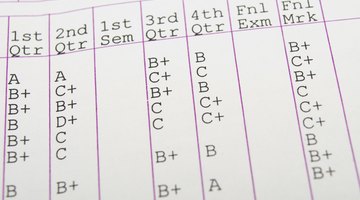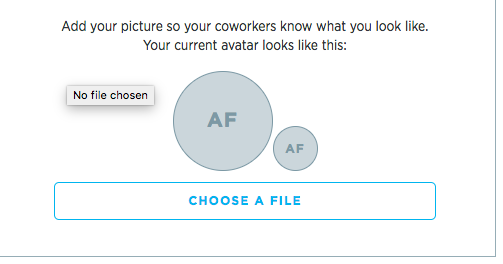Most high school students in the United States get graded through a letter system that is familiar to anyone who has been to a traditional school. Using a scale of A, B, C, D and F, teachers mark students assignments, tests, papers and overall progress. A GPA is the value of all of these marks converted to a number, by which a student's overall academic status can be measured and evaluated.
A GPA is the value of all of these marks converted to a number, by which a student's overall academic status can be measured and evaluated.
What Does GPA Stand For?
The acronym "GPA" stands for grade point average. A grade point average is the numerical equivalent of a letter grade assessment designed to evaluate student's academic performance.
Though letter grades are most common in the classroom, the GPA has become the standard measurement for comparing academic assessment in the United States. GPAs are used in a variety of areas, but mostly to rank student performance in discrete academic subjects and in school overall.
The acronym "GPA" stands for grade point average.
How Is a GPA calculated?
A GPA is calculated by assigning a number from 0.0 to 4.0 to each letter grade. A 4.0 is the highest possible grade point average and 0.0 is the lowest possible grade point average. The system takes a letter or percentage grade and converts it to a number between the 0.0 and 4.0 scale.
Once this is done, the value assessed is then multiplied by the number of credit units the course is worth. This is where GPAs help to differentiate high-weight classes like primary major subjects, from lower weight classes like sports or electives. An elective or a gym class, for example, rarely carries the same weight as a class in the sciences or the humanities.
Within the scale, an A= 4 points, a B= 3 points, a C = 2 points, a D=1 point and an F=0 points. These values are consistent throughout secondary and college educational environments. GPAs are calculated by multiplying the number of your letter grade in a course by the number of course credit units each class carries.
For example
So if your science course carries 4 credit units, and your grade is a B, 3 x 4 =12. You have 12-grade points in that particular course.
Your grade point average is calculated by adding up all the grade points you have earned in all of your courses and dividing it by the number of credit units you have, thereby assessing your average.
If you have a B which equals 12 points in science, and an A which equals 16 points in English and a C which equals 8 points in math, your GPA would be 12 + 16 + 8 divided by 12, the number of credit units you have, to equal a grade point average of 3.0, or a B average.
Is There a GPA Converter?
There are GPA converters online, but it is very easy to turn letter grades into numerical grades and calculate a GPA from there. By following the simple formula the grade point total for any grade for any course can be found. Although the A, B, C system seems fairly straightforward, there are small nuances which can change the outcome of a GPA calculation. For example, within the letter grading system, there are also + and - signs that are often administered that need to be taken into account. A B+ and an B- have different grade point values than a B, for example. The grade and GPA scale is:
- A+ = 4.0, A = 4.0, A- = 3.7
- B+ = 3.3, B = 3.0, B- = 2.7
- C+ =2.3, C = 2.0, C- = 1.7
- D+ = 1.3, D = 1.0
- F= 0
When you have identified all of the grades that you need to asses your GPA, including pluses or minuses for particular letters, you simply write down the equivalent numerical assessment. Once this is recorded you can multiply the numbers by the number of credit units each course holds, and then do the rest of the necessary calculations to tabulate your grade point average.
GPA to Percentage Conversion
Some institutions or professors prefer to evaluate work on a scale of a percentage of 100. These percentage grades can be converted into letter grades and thus into grade points. However, you do not need to convert from a percentage into a letter grade. The formula is applicable to any grading system that has a score that can be converted into a percentage or a letter.
When converting from a percentage into GPA points, there is a formula similar to the one used to convert letter grades to GPA points. The conversion and some GPA examples are:
- 97-100 = 4.0,
- 93-96 = 4.0,
- 90-92 = 3.7
- 87-89 = 3.3,
- 83-86, 3.0,
- 80-82 = 2.7
- 77-79 = 2.3,
- 73-76 = 2.0,
- 70-72 = 1.7
- 67-69 = 1.3,
- 65-66 = 1.0,
- Below 65 = 0.0
What Does a GPA of 4.0 Mean?
A GPA of 4.0 is equivalent to an A average. This doesn't necessarily mean that the student in question has an A in every class, but that the overall number of As he or she has earned helps to outweigh any lesser grades and bring the average up. GPAs can be deceptive because depending on the number of courses one is taking, a GPA can either be dramatically affected by one low grade or hardly at all.
For example
Imagine that Kim is taking 6 classes at 4 credits apiece, and Terry is taking 3 credits at 5 credits apiece. Kim and Terry both have a C in one class, but in every other class, they are getting an A. This gives Kim a GPA of 3.0 and Terry a GPA of 3.33. So even though Kim is getting As in more classes than Terry is, Terry's GPA is less affected by the C grade than Kim's is, because Terry's GPA is calculated using a lower number of credits.
History of the GPA
The history of grading, in general, can be credited to William Farish, a professor of philosophy at Cambridge University. Prior to the industrial revolution, education was about a mentor relationship. Teachers worked with students, spent time with them, got to know them and their learning styles and made it their job to ensure that all children that passed through their instruction left with a solid understanding of the material.
This was the responsibility of the educator, and any student who left a teacher's classroom without having demonstrably learned what the teacher had taught would have reflected poorly on the teacher. This all changed at the turn of the 19th century when the Industrial Revolution came about. As factory labor and piece-work labor began to be more popular, universities began to pay their teachers based on the number of children they had in their classes rather than a flat salary based on the job they had to do.
William Farish, a professor at Cambridge found that if he were able to evaluate student performance more quickly and disseminate information in a one-size-fits-all manner, he would be able to process more students more quickly and thus increase his income. Farish's system of grading caught on, and as many educators were eager to process as many students as possible so that they might join the new labor workforce, the practice spread.
The letter grading system Farish adopted was similar to the grading system that evaluated the quality of goods on a factory floor. An item being "up to grade" meant that it could be sold and that the maker could be paid for it. This is the basis of the system that was then put in place to evaluate student learning.
In retrospect, the grading system was less about ensuring that students left classes with a solid grasp of the material and a complete education. Rather, the focus was on getting as many students through the system as possible.
An item being "up to grade" meant that it could be sold and that the maker could be paid for it.
This was done at first to line the pockets of the teacher, but as the industrial revolution progressed and more and more factory labor was required, the system was useful in getting large numbers of students taught the exact same material, graded and then ready to enter the workforce. This system, while lacking in qualities and metrics that have been deemed critical by educators, has persisted into the 21st century. The GPA is the natural evolution of the grading system, wherein letter grades are converted to points, and students courses are weighted by credit hours.
the grading system was useful in getting large numbers of students taught the exact same material, graded and then ready to enter the workforce.
There are many criticisms of the system, but the greatest is that the model wherein the teacher grades the student on his or her demonstrated grasp of the material places the onus on the student and not the teacher. Students with low GPAs are often assumed to be less intelligent, less hardworking and less capable than their counterparts with higher GPAs.
However, research indicates that only a certain type of student thrives in the lecture format of most education spaces and that many students who are intelligent, motivated and hardworking may simply not be well served by the traditional format:
- which is less devoted to inculcating students with knowledge
- more devoted to imparting information to as many as possible,
- places the responsibility for being able to understand, interpret and apply the information being disseminated squarely on the student.
GPA Use in Education
For many high school students, the GPA is a topic of stress and concern. The GPA is used, most critically, for college admissions. Some universities have a GPA threshold that they do not go below, while other universities use the GPA as only a piece of a student's academic portfolio. Traditionally, a high GPA is seen as indicative of intelligence and ability to perform well academically. As the main college admissions criteria, this can understandably cause a lot of stress for student populations who are worried about their standing.
An issue with GPAs is that there is no truly standardized way of evaluating what an A is or what a B is. Schools vary widely on their perceptions of quality of work, and often the grading happens on a curve, meaning that a student's work is considered "A" work compared to the work of the student's peers.
In certain elite private schools with highly rigorous academic programs, the work that constitutes an "A" grade could be very different from work that earns an "A" grade in a larger less academically rigorous school with a large student population, less personal attention and more students to compare the work against. This is what can cause problems for students during the college admissions process.
Students who have high GPAs but who are not necessarily prepared for college-level work may find themselves admitted to a competitive university solely based on the strength of their GPA. A GPA's meaning is subject to interpretation, which is why many colleges and universities use it only as a piece of a student's academic background.
In addition to a GPA, most colleges and universities make their admissions decisions based on additional criteria like:
- extracurricular activities,
- a student's independent work,
- letters of recommendation
- and a personal essay or statement.
Related Articles
References
Writer Bio
Ashley Friedman is a freelance writer with experience writing about education for a variety of organizations and educational institutions as well as online media sites. She has written for Pearson Education, The University of Miami, The New York City Teaching Fellows, New Visions for Public Schools, and a number of independent secondary schools. She lives in Los Angeles.









